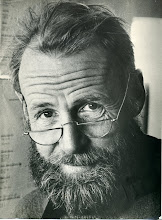Monday 27 May 1974
Our D4 tracks had finally got to the point where we could no longer position the ice sledges and so all today Bill Johnson and Bob Grant have been fitting grousers recovered last summer from a D4 abandoned by the US Navy.
As mouse I undertook the periodic task of burning the rubbish. Inevitably this involves cleaning all of the snow out of the incinerator. Garth Cowan reports that the trimming unit on his seismic equipment is playing up. Lately I have noticed that the expected “midwinter malaise” has begun to set in so at afternoon tea I gave the group an exhortation to suppress its three symptoms which I see as:
-
Not doing each job quite as thoroughly as before.
-
Griping about other people not doing each job as thoroughly as before.
-
Starting later and knocking off sooner.
Conditions at 0900 hours Wind North-West 25 knots Temperature -23.2°C
Tuesday 28 May 1974
At 0530 hours this morning it was warm (-14ºC), calm and overcast and then at 0545 hours a gust of wind slammed against the South face of the buildings. A shower of particles hit the walls and windows, the wind speed indicator swung up to 30 knots and the holding down guy ropes began to hum. At 0600 hours I went into the radio room to take the Vanda weather report and found that almost the same thing had happened there. Bob Newland asked me to standby whilst he finished re-writing the weather report.
During the morning Bill Johnson had to clean, strip and adjust the Shacklock range. All of our diesel burning equipment, except the Waterbury air heaters, seem to coke up very quickly. Bill suspects they are not designed for the Artic grade diesel we use. Later in the day Mike Wing came in leading a bleeding and rather woebegone looking old husky. At some stage four of the dogs had broken loose and several fights had obviously occurred. We were lucky there was no serious injury but on the other hand it seems probable that Lee, one of the bitch pups, was having her first heat. If so; she was probably served by one of the loose four.
Conditions at 0900 hours Wind North-East 15 knots Temperature -23.2°C
Wednesday 29 May 1974
I have come to the conclusion that Titch has not been making all possible efforts to maintain communications so I told him privately to pull himself together. I hope I have not been unjust.
Today the ablution wash hand basin drain blocked. Bill Johnson and Chris Wilkins spent all day struggling with it but luckily, in the end were able to clear it and install a sludge trap without having to dismantle very much of the building interior. Chris Wilkins also repaired the ionosonde fan motor.
Conditions at 0900 hours Wind East 15 knots Temperature -16.8°C
Thursday 30 May 1974
Lt Chris Stockwell, US Navy, rang today. He asked if we would accept responsibility for maintaining route flagging between Scott Base and the highest point on the road to McMurdo. Naturally I was delighted to have the chance to help and have given the job to Stuart Clarke.
I finally got around to knocking the top out of an old oil drum and smashing all our empty bottles into it. All glass rubbish goes back to New Zealand.
Conditions at 0900 hours Wind North-East 20 knots Temperature -20.0°C
Scott’s Discovery Hut at the end of Hut Penninsula
Friday 31 May 1974
Stocktaking is still occupying the maintenance staff. Bill Johnson shut down both Caterpillars and put the Base power load onto the Listers whilst carrying out some repairs in the engine room. With the Caterpillars shut down the East end of the Base seems much cooler. The laboratory staff are trying to improve the accuracy of our various clocks. In the evening we had about a dozen of the US supply group to dinner.
Conditions at 0900 hours Wind North-East 20 knots Temperature -26.8°C
Saturday 1 June 1974
Lt Chris Stockwell rang from McMurdo. He has been instructed to cut a hole in the ice through which the biologists can fish for samples but the Americans have no vehicle light enough to move on the ice. Our SnoTrac’s are suitable so I agreed. It may be useful to record the method. First, with a chainsaw, the outline of a four foot square hole was cut to a depth of about two feet. This left about ten inches of ice. The saw was used to put a hole in each corner through to the sea which quickly spurted through and filled the two foot space cut with the first pass. A manual six foot saw was then used to cut around the floor of the water filled hole. After which the ice slab constituting the floor floated to the top.
The laboratory staff spent the day levelling the photometer base.
Conditions at 0900 hours Wind North-East 16 knots Temperature -25.7°C
Sunday 2 June 1974
A day of rest. Nothing to report. Several of us attended a slide show by Bill Lokey on his tour of the Serengeti game park.
Conditions at 0900 hours Wind Calm Temperature -25.3°C


No comments:
Post a Comment